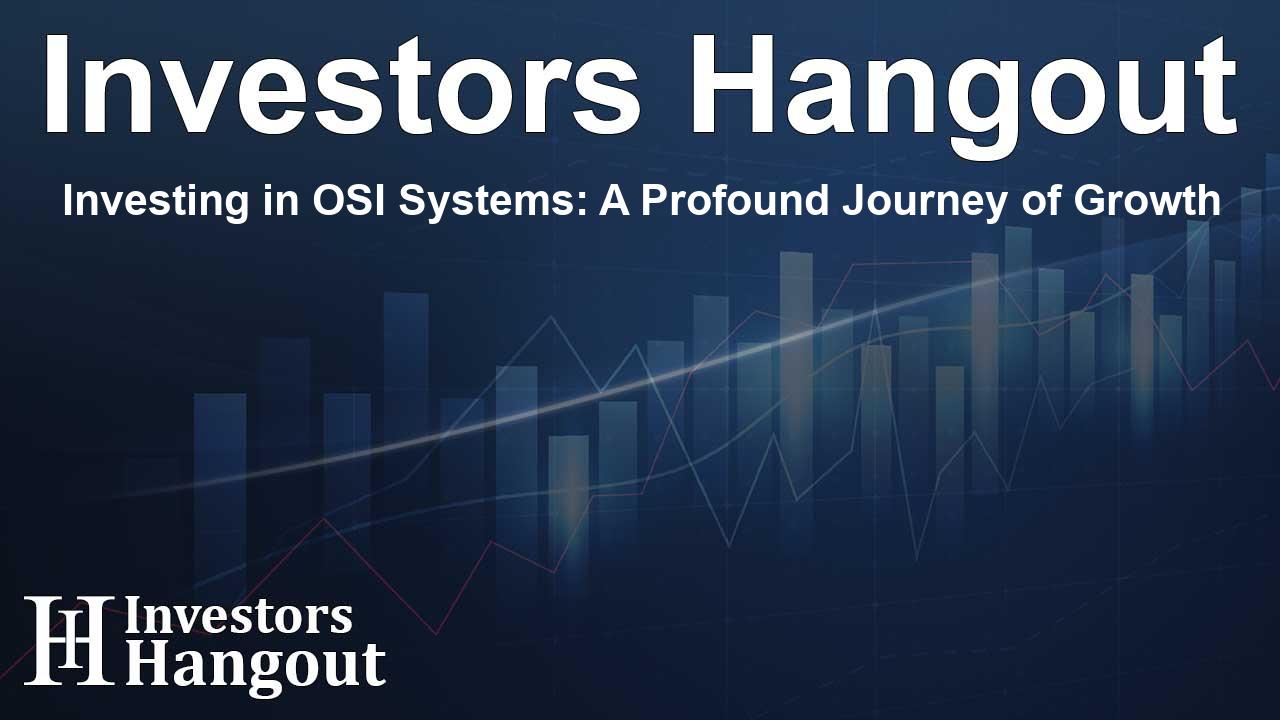Investing in OSI Systems: A Profound Journey of Growth

Investment Performance of OSI Systems
OSI Systems (NASDAQ: OSIS) has consistently delivered impressive returns, outperforming the market by an annualized rate of 1.66% over the past 15 years. This remarkable performance translates to an average annual return of 14.44%. Currently, the market capitalization of OSI Systems stands at an impressive $3.71 billion.
What if You Invested $1000 in OSIS?
Imagine if an investor had set aside $1000 to purchase shares of OSI Systems stock 15 years ago. Today, that initial investment would be valued at approximately $7,452.45, based on the current trading price of $220.97 for OSIS. This growth vividly showcases the impact of long-term investing.
Understanding Compounded Returns
The key takeaway from OSI Systems' investment story is the significant difference that compounded returns can make in growing wealth over time. Compounding works by reinvesting earnings, leading to wealth accumulation that accelerates as time goes on.
Market Trends and OSI Systems
In addition to its historical performance, OSI Systems continues to adapt and thrive in a rapidly evolving market landscape. The company's focus on innovation and operational efficiency contributes to its sustainable growth trajectory.
OSI Systems: A Stable Future
Looking ahead, OSI Systems is well-positioned to capitalize on emerging opportunities in the technology sector. With a diverse range of products and a commitment to excellence, OSI Systems aims to sustain its growth and deliver value to its shareholders.
Engaging with OSI Systems
Investors interested in OSI Systems should monitor market trends closely and consider their own financial goals. The past performance sets a compelling foundation, but market conditions continually evolve, requiring diligent analysis from potential investors.
Frequent Market Updates
Investing in stocks like OSI Systems not only involves analyzing past performance but also staying informed about ongoing developments and market trends. Continuous learning and adaptation form the cornerstone of successful investment journeys.
Frequently Asked Questions
What is the annualized return of OSI Systems over the past 15 years?
OSI Systems has achieved an annualized return of 14.44% over the last 15 years, outperforming the market by 1.66%.
If I invested $1000 in OSI Systems 15 years ago, what is it worth today?
An investment of $1000 in OSI Systems would be worth approximately $7,452.45 today based on its current stock price.
What factors contribute to OSI Systems' success?
Key factors include a focus on innovation, operational efficiency, and adaptability to market trends that drive sustainable growth.
Why is compounding important in investing?
Compounding allows investors to earn returns on both their initial investment and on the accumulated profits, leading to exponential growth over time.
What should I consider before investing in OSI Systems?
Before investing, consider your financial goals, current market conditions, and conduct thorough research into OSI Systems' performance and future prospects.
About The Author
Contact Evelyn Baker privately here. Or send an email with ATTN: Evelyn Baker as the subject to contact@investorshangout.com.
About Investors Hangout
Investors Hangout is a leading online stock forum for financial discussion and learning, offering a wide range of free tools and resources. It draws in traders of all levels, who exchange market knowledge, investigate trading tactics, and keep an eye on industry developments in real time. Featuring financial articles, stock message boards, quotes, charts, company profiles, and live news updates. Through cooperative learning and a wealth of informational resources, it helps users from novices creating their first portfolios to experts honing their techniques. Join Investors Hangout today: https://investorshangout.com/
The content of this article is based on factual, publicly available information and does not represent legal, financial, or investment advice. Investors Hangout does not offer financial advice, and the author is not a licensed financial advisor. Consult a qualified advisor before making any financial or investment decisions based on this article. This article should not be considered advice to purchase, sell, or hold any securities or other investments. If any of the material provided here is inaccurate, please contact us for corrections.
